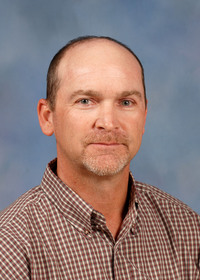County Gardeners Extension Express
Racoons
The Northern Raccoon, Procyon lotor, is found throughout the United States. Raccoons can be found in nature, such as in areas with large trees and bodies of water, as well as in towns and cities. As urbanization increases, encounters with raccoons in these areas are becoming more common. They easily adapt to their sur-roundings, whether that be in forests or cities. Raccoons have a grizzled gray color, bushy tails with black and gray rings, and a characteristic black mask-like marking on their face. They are pri-marily active at night but can occasionally be seen during the day.
Raccoons eat a variety of foods, including crawfish, frogs, fish, eggs, fruits, and berries. They will also forage around homes eating food left out for pets or placed in the trash can. To prevent this, trash cans should either be kept in a garage or shed, or fastened with straps. It’s also a good idea to bring in any pet food that’s left outside. Raccoons can be a problem in vegetable gardens as well. Placing electric fencing around the garden area is one method to keep them out. Homeowners should never feed raccoons as this can increase their population around the home and potentially lead to bites. Raccoons can be a carrier for rabies, parasites, and other pathogens harmful to people and household pets.
Raccoons can occupy spaces under sheds or porches, or in attics. The best way to prevent this is by removing openings into these spaces. Chimney access can be pre-vented by covering up the chimney opening with a heavy metal screen or sheet metal cap. Attic access can be reduced through screening and by removing overhanging branches and other routes of access to the roof.
If a raccoon does appear in your yard, the best option is to give it space. Most animals, if they aren’t used to people, will try to either escape or hide until the coast is clear for them to leave. It is when people get closer, either accidentally or inten-tionally, that the animal feels the need to defend itself. Contact the Mississippi Department of Wildlife, Fisher-ies, and Parks for questions related to injured or stray raccoons.
For further information on pondweed control, see Extension Publication P3735-10, Pondweeds.






